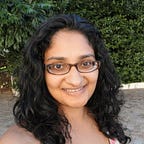The Lines Between My Kids’ Cultural Identities are Blurred — on Purpose
My girls know to greet one grandmother with “As-salamu alaykum, Nini” and the other with “Hi, Nana.” They seamlessly shift between asking for boti or keema at dinner. In the same breath they use both languages without consciously making the decision to.
My cultural identity has always felt like a bit of a question mark. As a child, I wasn’t entirely sure where I belonged or what was considered home. I was born in Pakistan, lived in Saudi Arabia until 10, and then spent the rest of my life in Canada. As a third-culture kid, I had trouble answering the question, “Where are you from?”
But, my children, who are also of Dutch, English and Canadian heritage, don’t share my experience — and I hope they never do. They navigate their cultural identity with ease, walking the tightrope between their two halves with the confidence of an aerial artist.
My kids don’t inhabit that uncertain middle ground between cultures or try to pick one side or the other, they wrap themselves in all of their cultural influences at once.
At two and four years old, the lines between their different cultures — from the language to the food to the traditions — are blurred. Everything they encounter is normal, and my husband and I work hard to make sure they always see it that way.
While neither child is fully bilingual (we’re working on it), they still understand Urdu, my mother tongue. They are fluent in English, but they add in Urdu words here and there, much like I do.
My girls know to greet one grandmother with “As-salamu alaykum, Nini” and the other with “Hi, Nana.” They seamlessly shift between asking for boti or keema at dinner and instructing their cat to baitho when they want him to sit down in their laps. In the same breath they use both languages without consciously making the decision to.
As a child, I was self-conscious about speaking Urdu outside of the house, but they’ve blazed that trail with self-assurance. It was only recently that my 4-year-old realized that those words were from a different language. She was excited to go to preschool the next day so she could teach her friends how to count in Urdu. When I picked her up at the end of the day, she was beaming because she had a chance to show off her skills.
Living in a big city in Canada, we are fortunate to be surrounded by people from many different cultures and traditions. It makes it easier for my children to embrace their own blend of cultures and share it with the world around them. We celebrate all the Catholic holidays as well as the Muslim ones. Lucky for my children, that means they get double the gifts.
Their holiday table is filled with turkey and lamb kababs, mashed potatoes and naan. Every celebration has baklava and gulab jamun, along with maple butter tarts and cream cheese brownies. My children are experts at tearing off pieces of roti with their little hands and using it to mop up the chicken curry on their Paw Patrol plates. In the same meal, they enjoy biryani and barbecued salmon, without realizing the profundity of it all.
Their effortless navigation of their cultural identity didn’t happen by accident. Partly, they are a product of their time and place. This enables them to embrace both of their cultures without even thinking about it. The other part, though, is engineered.
Our families work together to ensure that our children feel confident in their cultural identity. We teach them about who they are, and we encourage them to share their knowledge with their friends. And we constantly tell them that they are lucky to be able to experience this duality.
Thankfully, it’s all making a difference.
They have the kind of confidence in themselves I could only have hoped for growing up. My children are proud, strong, and full of enthusiasm for everything new they encounter. At their young ages, their dual identity has been simplified into one culture they share with each other. When they are older, I hope they continue to appreciate the intertwining worlds that make up their heritage.
And instead of feeling like their cultural identity is a question mark as I once did, I hope it always feels like an exuberant exclamation point.
